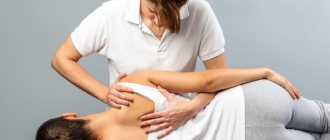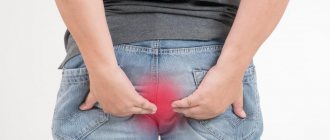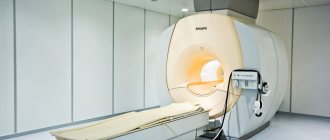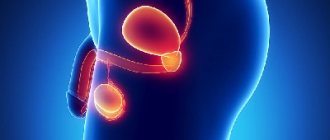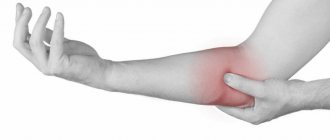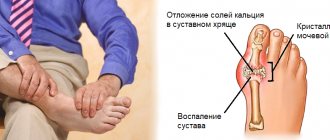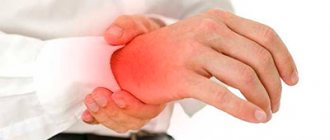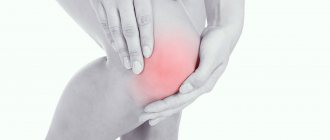The testes are the male gonads responsible for the production of hormones and reproductive cells (sperm). Pain in the testicles to the touch or a feeling of discomfort is a reason to worry and consult a doctor.
There are several reasons why pain occurs, and ignoring this condition can lead to infertility or removal of a testicle.
Sometimes the pain results from a condition in the lower abdomen or scrotum that may become enlarged. The pain can be acute or chronic.
Pain in the testicles - causes
The testicles are very sensitive to touch, so even the slightest blow or injury can cause pain and discomfort.
Causes of pain:
- trauma – edema (swelling), possible hematoma (bruise or collection of blood);
- testicular torsion (a consequence of rotation of the testicles with interruption of blood flow) - severe, one-sided and constant pain, sudden onset of pain, asymmetrical, transversely high testicles;
- testicular torsion - gradual onset of pain over several days, pain in the upper part of the testicle, the appearance of blue or black spots under the skin in the upper part of the testicle (typical for boys aged 7 to 14 years);
- epididymitis (inflammation of the testicles) - sudden or gradual pain in the epididymis, sometimes in the testicles themselves, possibly more frequent urination, edema (swelling), erythema (redness of the skin);
- orchitis (inflammation of the testicles) - pain in the abdomen and scrotum, nausea, fever; unilateral or bilateral edema (swelling), erythema (redness) of the scrotum;
- consequences of a recent vasectomy;
- side effects of certain antibiotics or chemotherapy;
- testicular hernia – pain in the testicle, enlarged testicle, bulge in the scrotum;
- kidney stones – pain may progress to the testicles;
- testicular injury (from a blow) – transient pain, swelling (swelling, possible hematoma);
- testicular infections – affect one or both testicles and can be bacterial or viral; pain, swelling and erythema, and sensitivity to touch occur.
Inguinal hernia
Inguinal hernia in men often affects the testicles (27% of cases). It is a protrusion of the contents of the abdominal cavity through the inguinal canal.
Symptoms of inguinal hernia:
- bulge on testicle;
- dull pain or discomfort in the testicles;
- worsening symptoms due to coughing, sneezing, or lifting.
An inguinal hernia is removed surgically.
Testicular torsion or testicular torsion
Testicular torsion often affects only one testicle and is accompanied by severe pain. This occurs because the connective tissue that holds the testicles firmly in the scrotum weakens, and they then begin to move freely. Some boys are born with weakened connective tissue, and in some men the condition is caused by injury.
The injury can occur suddenly, during sleep, or during exercise or physical activity. Most often occurs during puberty due to rapid growth.
Symptoms:
- sudden severe pain, often in only one testicle;
- swelling and swelling;
- high testicle (the affected part is asymmetrical);
- nodules and protrusions in the scrotum;
- nausea and vomiting.
Testicular torsion is detected during physical examination and ultrasound. Treated surgically (by returning to the physical position and fixing).
Epididymitis
is an inflammation of the epididymis or testicles. Epididymitis is widespread among all age groups, but especially among boys and men aged 14 to 35 years. The most common causes of this inflammation are sexually transmitted diseases, bacterial infections, or result from chemical irritation due to urine returning to the epididymis.
Bacterial infections causing epididymitis:
- chlamydia;
- gonorrhea;
- urinary tract infection;
- prostate infection.
Symptoms:
- pain in the testicles to the touch;
- testicular pressure;
- redness;
- edema (swelling);
- possible fever;
- possible pain when urinating;
- frequent urination.
Stages of diagnosing epididymitis:
- physical examination (swelling, redness, sensitivity to touch);
- urethral smear;
- blood analysis;
- Ultrasound;
- Analysis of urine.
The infection is treated with antibiotics. There are also several ways to relieve pain:
- bed rest;
- keep ice packs on the painful area;
- avoid lifting heavy objects;
- holding the scrotum in an elevated position for some time.
Kidney (urinary) stone
Kidney stones are formed from mineral salts contained in urine. These are small, hard deposits that can cause severe pain. Sometimes the stones can reach the urethra (urinary tract), where they stop the flow of urine. They then cause pain and possible infections.
Symptoms:
- painful urination;
- nausea and vomiting;
- if the testicle is affected - pain on palpation;
- hematuria (presence of blood in the urine - reddish color of urine);
- frequent urge to urinate;
- the pain spreads to the lower back and groin.
Varicocele
Varicocele is a condition of dilated veins in the scrotum. In boys and teenagers, it can cause infertility or abnormal development of the testicles. It is unclear what exactly causes varicoceles, but they most often occur during puberty.
Veins form near both testicles, and varicoceles often appear on the left side due to the location of the left testicular veins.
Varicoceles often cause no symptoms, but may cause pain that:
- changes from sharp pain to dull pain;
- worsens over time;
- increases with physical activity.
They are detected during a physical examination by a doctor or an ultrasound examination. If the varicocele has not spread too much, treatment will not be necessary. If it has spread, a laparoscopic procedure may be performed in which the affected veins are cut or sealed.
Varicoceles can cause infertility or compression of the affected testicle.
Mumps (mumps)
Mumps is a contagious viral infection that causes enlargement of the salivary glands. The causative agent is a virus from the mumps family.
Symptoms of mumps:
- swelling or tenderness of the glands under the ears (appearance of swollen cheeks);
- fever (38°C to 40°C);
- headache;
- earache;
- a sore throat;
- loss of appetite;
- pain when eating acidic foods or drinks.
Mumps is a highly contagious disease, but once a person overcomes it, they remain immune to it forever. Mumps is treatable, but if not treated promptly, it can cause:
- encephalitis – inflammation of the brain caused by a viral infection;
- meningitis - inflammation of the brain and meninges;
- orchitis is an inflammation of the testicles that can cause infertility. Orchitis also causes pain in the testicles.
Orchitis (inflammation of the testicles)
Orchitis is inflammation of one or both testicles. This manifests itself as painful swelling of the testicles.
This may be caused by:
- chlamydia;
- gonorrhea;
- mumps;
- epididymitis
- other infections.
The symptoms of orchitis are as follows:
- swelling of one or both testicles;
- moderate to severe pain in the testicles to the touch;
- sensitivity of the testicles to touch;
- heat;
- nausea and vomiting.
If a bacterial infection is excluded, symptomatic treatment with compresses and analgesics is sufficient. Bacterial forms are treated with antibiotics.
Testicular cancer
Testicular cancer is the most common form of cancer in men aged 15 to 35 years. It begins with a growth in the scrotum, which can be painful, but more often painless.
It is most often treatable if detected and treated early. Symptoms of testicular cancer:
- nodules on the testicles;
- enlarged or reduced testicles;
- hardening of the testicles;
- pain in the groin and lower abdomen;
- accumulation of fluid in the scrotum - hydrocele;
- feeling of heaviness in the scrotum.
Regular self-examination is important to detect symptoms of the disease in time.
Functions of the right and left testicles
The right and left eggs in men have other names - testes and testicles, which create the paired gonad - the sex gland, which is located in the soft scrotum. It produces testosterone and sperm. In any of the eggs there are 200 lobules, separated by partitions where the seminiferous tubules are located. Sperm maturation occurs in them.
The spermatic cords are located at the top of the right and left eggs. They contain nerves, blood vessels and the vas deferens. The appendages are located on the side of the testes. They transport seminal fluid into the vas deferens and bring sperm to maturity.
Testicular pain in boys
Testicular pain in children often occurs during puberty or at a younger age. The most common conditions causing pain:
- hydrocele (hydrocele) – this condition occurs in newborns because the testicles move as the baby develops in the womb, and approximately 1 in 10 male children are born with this condition;
- varicoceles – occur during puberty due to the accelerated development of the genital organs, when an increase in blood vessels in the testicles is observed;
- torsion of the testicle, especially its apex - often occurs in boys aged 8 to 12 years;
- orchitis – frequent inflammation due to bacterial or viral infections;
- Mumps (mumps) is a viral infection that can cause infertility in boys.
Diagnostics
Determining the nature of the pathology is the responsibility of a urologist-andrologist. During the interview, the specialist clarifies when and under what circumstances the pain in the scrotum arose, what symptoms were accompanied, and how the disease developed over time. The examination program may include the following diagnostic procedures:
- Visual inspection.
Provides for assessing the condition of the external genitalia, detecting edema, hyperemia, cyanosis, local hyperthermia, dilated veins and other changes. During palpation, the condition of the testicle and other structures of the scrotum is assessed, and enlarged inguinal lymph nodes are identified. - Diaphanoscopy.
Carried out as part of the initial appointment. Makes it possible to differentiate fluid accumulation from other pathologies accompanied by an increase in the volume of the scrotum. - Ultrasonography.
Informative and safe basic research. An ultrasound of the scrotum reveals inflammatory changes, tumors, hematomas, hemorrhages, and testicular torsion. To assess the condition of the vessels, Doppler ultrasound is additionally performed. - Scintigraphy.
Can be static and dynamic. In the first case, structural disorders are determined, in the second, blood flow is assessed. The technique is used for traumatic injuries, inflammatory processes, vascular damage, and neoplasms. - Scrotal puncture.
Performed to identify fluid. Allows you to confirm the presence of spermatocele and hydrocele, to distinguish between these conditions with hemorrhages, neoplasia and hernial protrusions. - Lab tests.
Based on the results of a general blood test, inflammation is confirmed and the severity of anemia in tumors and injuries is assessed. For STIs, ELISA and PCR are performed. In case of dysuria or suspected diseases of the urinary system, general and biochemical urine tests may be indicated. The material obtained during punctures and biopsies is studied by histological or morphological examination.
Consultation with a urologist-andrologist
When should you see a doctor?
Contact your doctor if:
- feel a swelling or bulge in the testicles;
- testicles sensitive to touch;
- if the testicles are painful to the touch,
- edema (swelling of the testicles);
- erythema (redness) of the testicles occurred;
- the position of the testicles has changed.
Seek emergency
medical help if:
- you cannot bear pain in the testicles;
- pain occurs with nausea, vomiting and fever;
- were seriously injured;
- there is bleeding that does not stop.
Treatment of testicular pain
Testicular pain is treated primarily by identifying and determining the cause of the condition. Often this treatment depends on the specific disease, so antibiotics are used for infections.
Treatment includes:
- visiting a medical facility;
- physical examination;
- ultrasonography;
- blood and urine tests;
- use of antibiotics;
- peace;
- ice packs (cold compresses);
- surgical operations.
